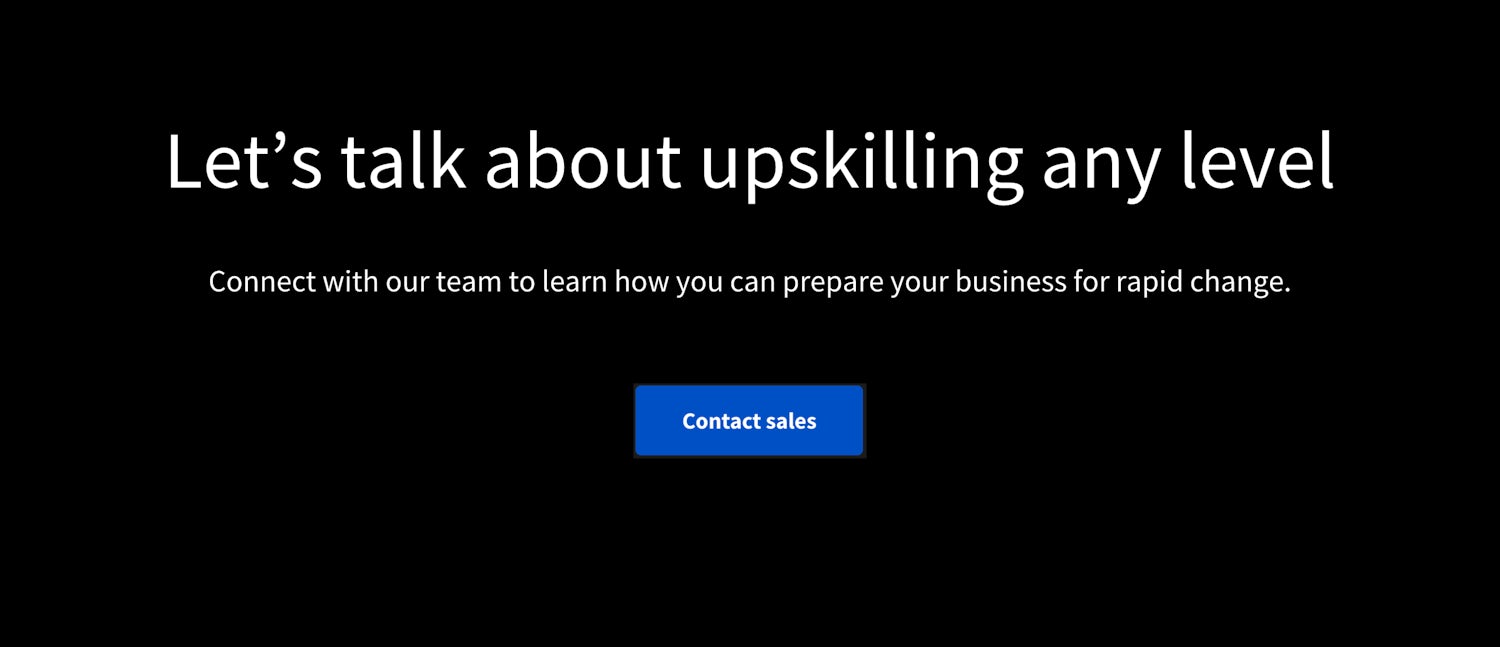What Is Reskilling?
When it comes to addressing skill gaps, businesses have a wealth of solutions to take action on. Learn more about how reskilling can address skill gap issues and set your business up for success.
![[Featured image] Three coworkers working on learning new skills at a computer in a server room](https://d3njjcbhbojbot.cloudfront.net/api/utilities/v1/imageproxy/https://images.ctfassets.net/wp1lcwdav1p1/4eUiNKULResk4waE8o79Ns/e7d3639c745ddc6207c142d5edcdd159/GettyImages-672157207.jpg?w=1500&h=680&q=60&fit=fill&f=faces&fm=jpg&fl=progressive&auto=format%2Ccompress&dpr=1&w=1000)
Automation, artificial intelligence, evolving technology, and the gig economy have all contributed to rapid changes in what work looks like. These changes create challenges for businesses, who may need help finding and retaining employees with the required skills to be successful in their roles. The increasing skill gaps among workers and the expense of hiring and training new workers affect a business's ability to focus on growth.
Reskilling is a term for training current employees with new skills to move into new roles. It is an effective strategy to retain top talent while adapting to evolving needs and technology.
In this article, learn more about reskilling, its benefits for your business, how it differs from upskilling, and how to implement reskilling at your workplace.

What is reskilling?
Reskilling is the method of training an existing employee in new skills so they can move into a different role or department within your company. For example, an employee typically working as an in-person customer service staff might train to take over a new digital customer service platform. Reskilling often involves training employees in new skills adjacent to their current position, making it easier for them to transfer their expertise into a new role without completely starting over.
Reskilling allows a business to retain talent and create an adaptable workforce that can shift and change to meet new challenges without high turnover. This eliminates the need to hire new staff members to continually address skill gaps.
Reskilling vs. upskilling
Like reskilling, upskilling can address skill gaps, but it focuses on obtaining skills that enhance an employee’s current expertise and allow them to advance in their current department or role. Upskilling supports employees as they gain new responsibilities or senior titles. Conversely, reskilling moves employees into new roles or departments.
Upskilling is vital for investing in an employee’s future, capitalizing on their institutional knowledge, and understanding a business’s mission and values. Reskilling is critical for companies with significant changes or growth who want to keep top talent and expand their team’s ability to meet new challenges.
Read more: The Importance of Skill Development and Where to Start
What is reskilling used for?
Reskilling’s primary use is addressing the changes in technologies in the workforce, such as digitalization, automation, artificial intelligence, and robotics. These changes create skill gaps because the updated technologies require staff to interact with new platforms and tools they must familiarize themselves with.
Reskilling offers businesses the opportunity to maximize the knowledge and experience of their current employees by training them on modern technology and moving them into new roles instead of spending time and money to hire externally.

Benefits of reskilling
Reskilling offers benefits to both employers and their employees. For employers, reskilling allows the maximizing of existing talent in your business. Instead of spending the money and time to locate new hires for roles requiring background knowledge or expertise, you can move an employee into a new department or position and build on their existing skill set with lateral or adjacent skill training. This allows your business to grow and adapt to a changing landscape while maintaining a high-quality team.
Reskilling helps create an environment of learning and professional career growth attractive to high-quality talent. It saves employers money on continual hiring needs, creates an agile workforce ready to address changing technologies, and maximizes talent and expertise, all while boosting employee morale and satisfaction.
Employees also benefit from reskilling initiatives. Companies with employees who feel undervalued due to a lack of professional development tend to experience high turnover. Employees will leave for new jobs if they don’t feel an employer is investing in their futures. Reskilling addresses this issue by offering internal mobility to employees who are much more likely to stay.
How to implement reskilling
To create a successful reskilling program, business leadership must first consider what they are trying to achieve, whether it is the creation of a new department or addressing a pressing skills gap. Then, it’s time to identify the employees who would benefit from reskilling, either due to the changing of their department or because they would appreciate the opportunity to grow into a new role.
Reskilling initiatives include a combination of the following facets. However, these practices are dependent on a business’s specific size, budget, and goals:
Job shadowing, which provides the opportunity for an employee to learn about a new role or skills during the workday from someone who already has that skill set
Training events to offer formalized learning opportunities
The creation of a company-wide learning culture that encourages staff to try new skills
Assign new roles to employees and offer consistent monitoring and progress check-ins
Adopt a tracking framework to ensure reskilling objectives and goals are met.
Incentives to complete online courses or certificates
Opportunities to develop both technical and workplace skills
A business’s reskilling initiative isn’t just for developing established employees; it is also helpful in attracting top talent. Professionals interested in working for businesses that invest in their workers are much more likely to choose a company with reskilling opportunities since it means they can continue to grow and learn without needing to constantly job hunt.
The adaptability of a reskilled workforce also means that a business can avoid additional expenses or unnecessary layoffs, as well as the low morale and decreased productivity that tend to result from losing staff. When employees are happier, they typically stay longer, creating a business with a good reputation that others will want to come and work for.
Getting started with Coursera
You can learn how to create reskilling initiatives for your business with courses and certificates offered on Coursera. With Coursera for Business, you’ll find high-quality courses that allow employees to learn tech, data, and leadership skills. No matter the industry or business goals, courses are available to develop your team’s skills and create a stronger, more agile workforce.

Coursera Staff
Editorial Team
Coursera’s editorial team is comprised of highly experienced professional editors, writers, and fact...
This content has been made available for informational purposes only. Learners are advised to conduct additional research to ensure that courses and other credentials pursued meet their personal, professional, and financial goals.